How often do we really think about “place” in connection with the Christian life?
In our highly mobile culture, many of us know what it means to feel displaced or removed from “home.” When I first returned to my childhood home in southwestern Ontario, I was struck by the sense of solidarity I had with this place—not merely with the people, but also with the topography and landscape that had been part of my childhood background. This place had shaped me.
For Christians the importance of place goes deeper than our roots and childhood home. We have a God who intentionally created our place, this world. Furthermore, God called a specific people, Israel, to journey to a particular place, the promised land. Even the end of the biblical story points not only to redemption, but also to the gift of a place where God will dwell with his people.
In this Advent series, we explore this concept of place. We start with the Garden of Eden—from which we were quickly displaced as a result of the fall. But Christ, in his coming, came to our place—to redeem not only us but the very places we live and call home. In the confidence of Christmas, we look forward to our final place, when we will complete this journey of displacement—when God brings home down to us.
—Willemina Zwart
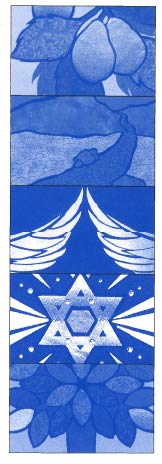
FIRST SUNDAY OF ADVENT-DISPLACED
Place: The Garden of Eden
Scripture
Genesis 2:4-25; 3:1-13, 22-24
Sermon Notes
This sermon will explore the goodness of place, particularly of that first garden—a place of God’s caring and love. When Adam and Eve sinned, they were sent out of that place.
That’s the way it is with us too. Through our sin and disobedience, we have transplanted ourselves out of the place of God’s caring and love (Isa. 59:1-2).
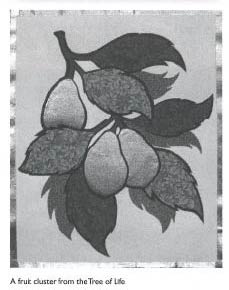
One way to view the story of salvation is as God’s plan to “re-place us.” That plan, already promised in Genesis 3:15, points to one who picks up where Adam and Eve left off in the Garden. The weight of being kicked out of the Garden will be shouldered by the promised One (as seen in Gethsemane).
And so we wait. . . .
Song Suggestions
“I Want to Walk as a Child of the Light”Thomerson
“Softly and Tenderly Jesus Is Calling”Thompson
“Come, Thou Long-Expected Jesus”Wesley
“Hark, the Glad Sound!”Doddridge
“Bless His Holy Name”Crouch
SECOND SUNDAY OF ADVENT THE JOURNEY OF FAITH
Place: The Journey to Canaan (Ur to Haran to Canaan)
Scripture
Genesis 11:31-12:5; 15; Hebrews 11:8-12
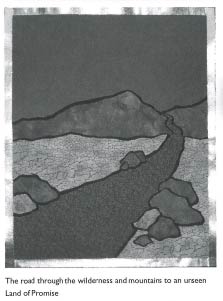
Sermon Notes
Many years after God’s people are displaced from the Garden, God chooses a man to start the journey back home. Born in Ur, but now living in Haran, Abraham is called forth to begin the pilgrimage to Canaan, the promised land.
What was this journey like for Abraham? Imagine him—no sense of place, wondering where he might sleep, what the land might offer, who he might meet, whether friend or foe. (Explore the psychology of the journey.)
In faith, Abraham journeyed to a new place where God and humanity would again meet. Yet, for Abraham, this journey was never completed. Even in the promised land he was “like a stranger in a foreign country” (Heb. 11:9).
Who will complete this journey? Who will find the place where God and humanity can once again dwell in peace, in shalom?
And so we wait. . . .
Song Suggestions
“O Come, O Come, Immanuel”Psalter
“If You but Trust in God to Guide You”Neumark
“Step by Step”Beaker
“I Want Jesus to Walk with Me”Afro-American Spiritual
“Will You Come and Follow Me”The Iona Community
“Lead Me, Guide Me”Akers
“Precious Lord, Take My Hand”Dorsey
THIRD SUNDAY OF ADVENT A PLACE TO CALL HOME?
Place: The Temple in Jerusalem/The Holy of Holies
Scripture
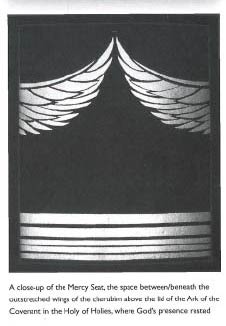
1 Kings 8:1-12, 54-61; John 2:19; Hebrews 9:11-14; 10:19-25
Sermon Notes
Home for humanity is being reconnected with God. For the Israelites, who have made it to the promised land, this place of reconnection is the temple—the place of God’s presence, the place where God dwells in the heart of Israel. No wonder the Jews put such hope in the temple of Jerusalem.
a.d. 70—the destruction of the temple. Where was God? How could God dwell with his people if the only acceptable place of his dwelling was destroyed? And without the temple, where was home?
We too long for a place of rest, a place where God dwells with us, his people. Who will show us the way home?
And so we wait. . . .
Song Suggestions
“I Will Enter His Gates”Brethorst
“I Love to Be in Your Presence,”Baloche, Kerr
“Shine, Jesus, Shine”Kendrick
“Come into the Holy of Holies,”Sellers
FOURTH SUNDAY OF ADVENT-AN UNLIKELY PLACE OF UNLIKELY PEOPLE
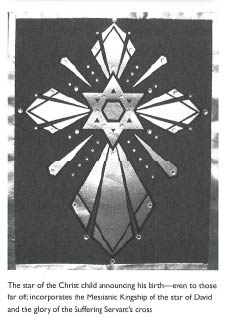
Place: Bethlehem
Scripture
Ruth 1:22; 1 Samuel 16:6-13; Luke 2:1-7
Sermon Notes
Bethlehem was a small town, five miles out of Jerusalem. Literally, the name means “house of bread.” In this sermon, we set up three snapshots of Bethlehem:
- a Moabite widow moving into the strange new town of her embittered mother-in-law;
- an old prophet meeting with a sheep farmer and his sons;
- a young married couple, expecting any day, traveling for the census.
We take a close look at the unlikely aspects of each of these snapshots:
- How could a Moabite woman be in the kingly line?
- How could the youngest son from Hicksville be anointed the next king, especially with the present king alive and well?
- Why were Joseph and Mary making this trek together, especially with Mary in her state?
The first two stories can be fleshed out to their unlikely conclusions, but leave the Luke passage hanging with a question: Who is this baby and what’s his significance in this unlikely place?
And so we wait. . . .
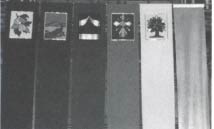
Song Suggestions
“Hark, the Herald Angels Sing”Wesley
“O Come, All Ye Faithful”Wade
“O Little Town of Bethlehem”Brooks
DECEMBER 25-OUR PLACE
Place: London [Your Community]
Scripture
John 1:1-15 (esp. v. 14)
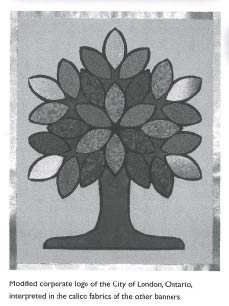
Sermon Notes
Here we explore the God who made and makes his dwelling in our place. As The Message puts it, “The Word became flesh and blood, and moved into the neighborhood.” In this sermon, we tie in the previous themes in light of Jesus:
- picking up in the Garden where Adam and Eve left off
- his journey of faith—a stranger in a strange land, which led to death on a cross
- dwelling among us—so we become the temple of God
- using unlikely places and unlikely people in his “re-placement” plan
But more than that, we will explore the reality that this Jesus dwells here, in this community, at this time in history. We need not wait, but rather believe and live in the reality that God is among us, calling us to love and serve in this place.
As we do so, we find home, we are replanted in the place of God’s caring and love. For he came to our place, and made it his. But this is not the end of the story.
And so we wait. . . .
Song Suggestions
“Away in a Manger”Psalter
“What Child Is This?”Dix
“Angels We Have Heard on High”Psalter
“Joy to the World”Watts
“Glory to God”Schultz
FIRST SUNDAY AFTER CHRISTMAS A FAMILIAR YET NEW PLACE
Place: The New Jerusalem
Scripture
Hebrews 11:1-2, 10; 12:22-29; Revelation 21:1-5
Sermon Notes
Here is a picture of God redeeming a new place—a place where we will all find rest and home. Finally, the full re-placement plan has been completed. God dwells with his people—for all of the earth has become his temple-palace. (The dimensions of the Holy City equal to the size of the known world in John’s day.)
Here we can explore what it is we hope for in this descending city. And we find ourselves not unlike Abraham. With eyes of faith, we eagerly await what we cannot see. Although we can experience some sense of re-placement, the fullness of our true home, our final place of rest, is yet to come.
And so we wait. . . .
Song Suggestions
“Christians Awake”Byrom
“Oh, the Deep, Deep Love of Jesus”Francis
“Jerusalem the Golden”Bernard of Cluny
“As with Gladness Men of Old”Dix
“Soon and Very Soon”Crouch
Banner: The New Jerusalem
[No image; just solid bright gold fabric.]
